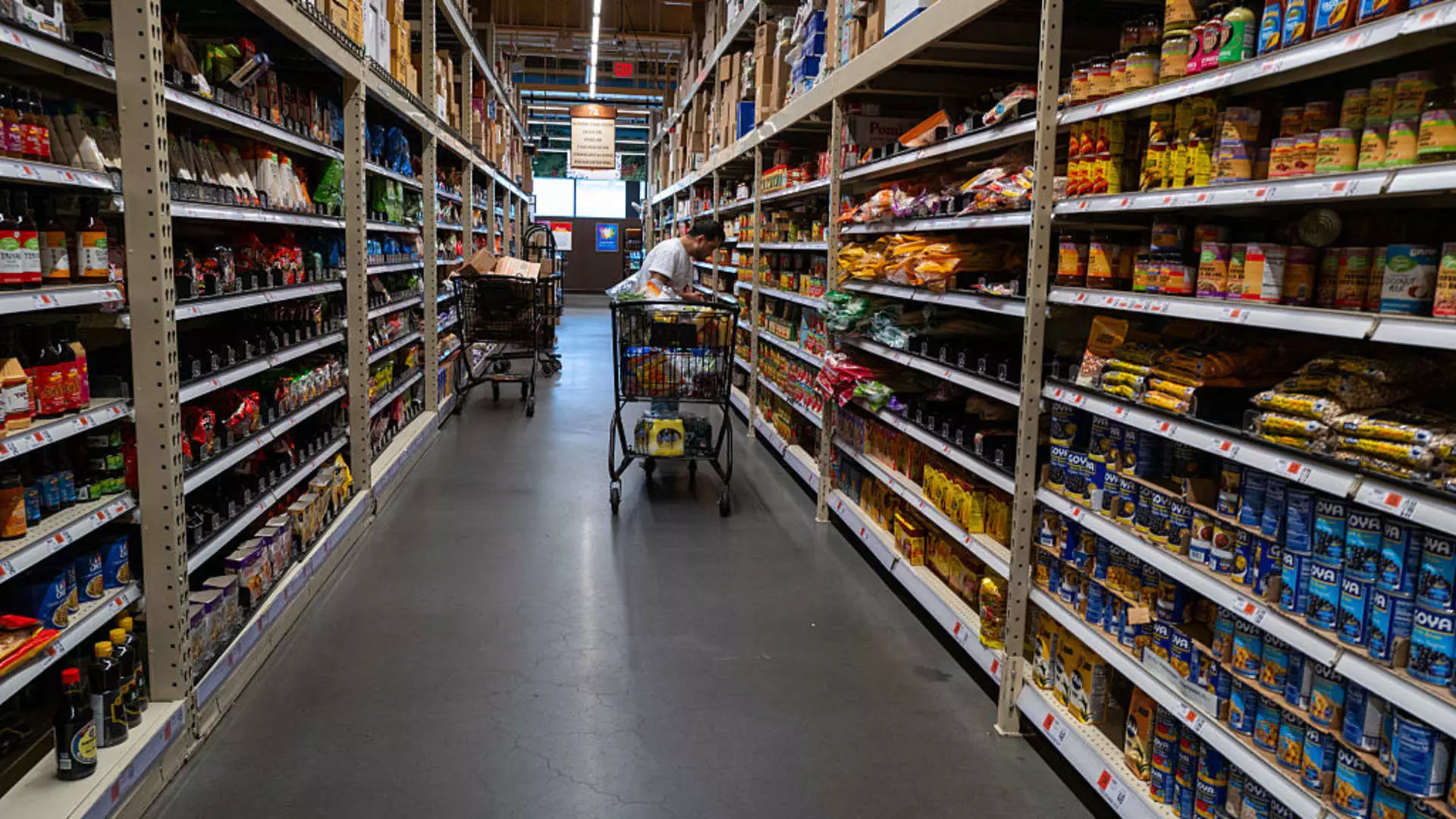In today’s complex financial arena, inflation has emerged as a silent predator, neither growing nor receding in any significant way. The latest reports reveal an annual inflation rate lingering at 2.1%, a figure that, while seemingly benign at first glance, belies underlying tensions in consumer spending and economic policy. This stagnation is concerning, especially when tariffs implemented by President Donald Trump barely made an impact on consumer prices in their initial stages. Such resilience in inflation does not demonstrate strength; it is more indicative of an economy teetering on the edge, struggling to find a foothold.
The personal consumption expenditures price index, which serves as the Federal Reserve’s bellwether for inflation metrics, exhibited a meager 0.1% increase for the month of April. Undeniably in line with forecasts, one must ponder whether such minimal shifts are sufficient when the health of the economy is at stake. Moreover, core inflation figures, which strip away food and energy, also fell short of anticipations. This revelation prompts one question: are we witnessing a truly stable economy, or an imminent crisis lurking just beneath the surface?
Consumer Anxiety: A Harbinger of Greater Issues
Perhaps the most revealing aspect of this economic tableau is the spike in personal savings rates, now soaring to 4.9%—the highest seen in nearly a year. This reflects a palpable shift in consumer behavior, challenging the once buoyant narrative of American spending habits. When citizens proactively conserve their resources, it illuminates a widespread anxiety about future economic stability. Coupled with a tepid 0.2% increase in consumer spending, the message becomes alarmingly clear: anxiety is seeping into the American psyche, prompting households to play it safer.
It is crucial to understand the implications of this dual reality. On one hand, rising savings suggest that people are preparing themselves for potential difficulties ahead; on the other, it demonstrates the uncharacteristic retrenchment of consumers, effectively stifling growth. In this context, it becomes evident that the combination of stagnant wages and heightened fears surrounding job security plays a significant role in curbing consumer spending, leading to a feedback loop that yields minimal economic growth.
The Fed and the Turbulent Waters of Monetary Policy
President Trump’s ongoing push for lower interest rates complicates matters further, as he seeks to manipulate monetary policy in a bid to alleviate inflationary pressures. However, the Federal Reserve has exhibited caution, attributing its hesitance to a myriad of factors, one of which is the potential long-term fallout from tariffs. This precarious balancing act raises questions of political integrity and the independence of the Fed, a central body that ought to remain insulated from political machinations.
It is critical for policymakers to navigate the confusion surrounding Trump’s tariffs carefully. The imposition of sweeping 10% duties on all U.S. imports was marketed as an attempt to correct longstanding trade imbalances, but the ramifications of such actions—especially those aimed at countries vital to supply chains—could spark a cascade of inflation. Despite reassurances from the Fed, these geopolitical maneuvers engender unease among economists, warning of the specter of stagflation reminiscent of the early 1980s.
The Unfolding Economic Drama: Courts and Tariffs
Adding yet another layer of complication, an international court recently ruled against Trump’s tariffs, asserting that he overstepped his boundaries without just cause. However, the political theater persisted as an appeals court granted the White House a temporary reprieve. The ongoing back-and-forth only serves to entrench uncertainty further into the economic fabric, yielding a situation where businesses remain frozen, paralyzed by indecision about future costs and supply chain disruptions.
Initially, tariffs were perceived as a means to redress injustices in trade; however, the aftermath is illuminated by stagnant wages and decreasing consumer confidence. This economic malaise combined with shifting policies culminates in a precarious state of affairs—one that may escalate beyond simple inflation to represent a much graver threat to the American economy.
The interplay of inflation, cautious consumer behavior, and an indecisive Federal Reserve speaks to a larger narrative: we find ourselves caught in a convoluted web of political agendas and economic theories with the very foundation of our financial stability at stake. As this ongoing saga unfolds, it remains to be seen whether our leaders will be able to navigate the storm or if we will remain ensnared in an era marked by economic stagnation and uncertainty.



Leave a Reply